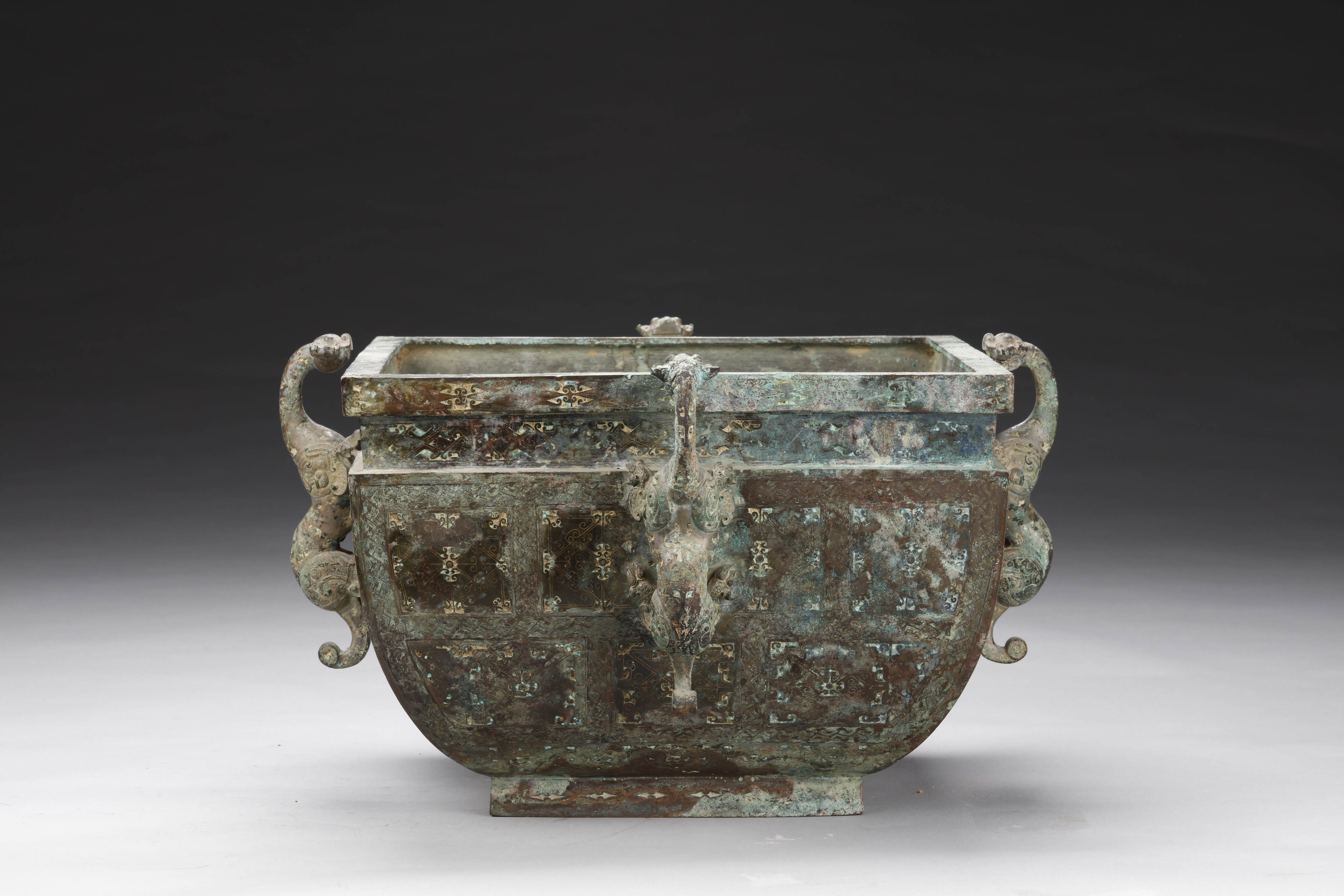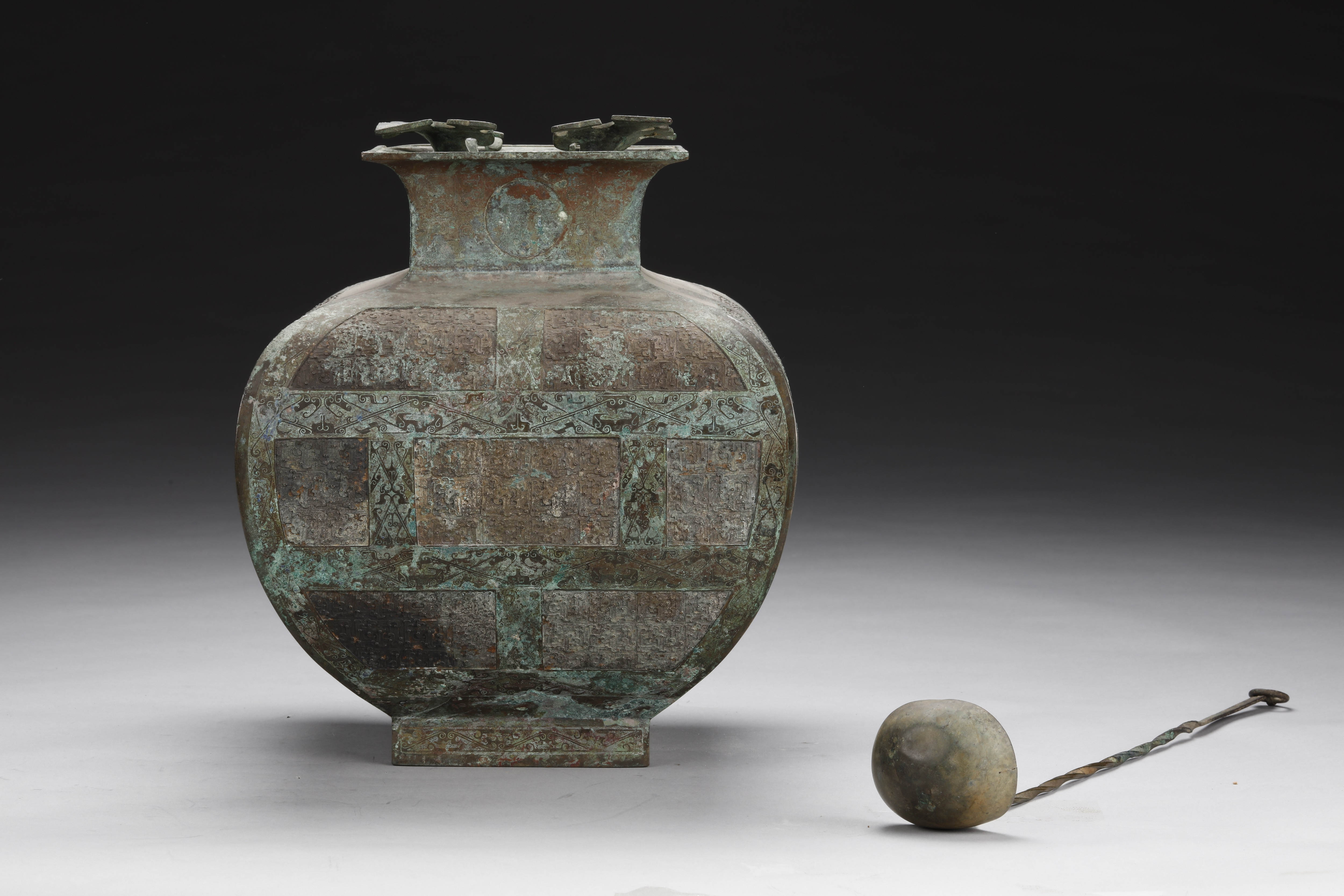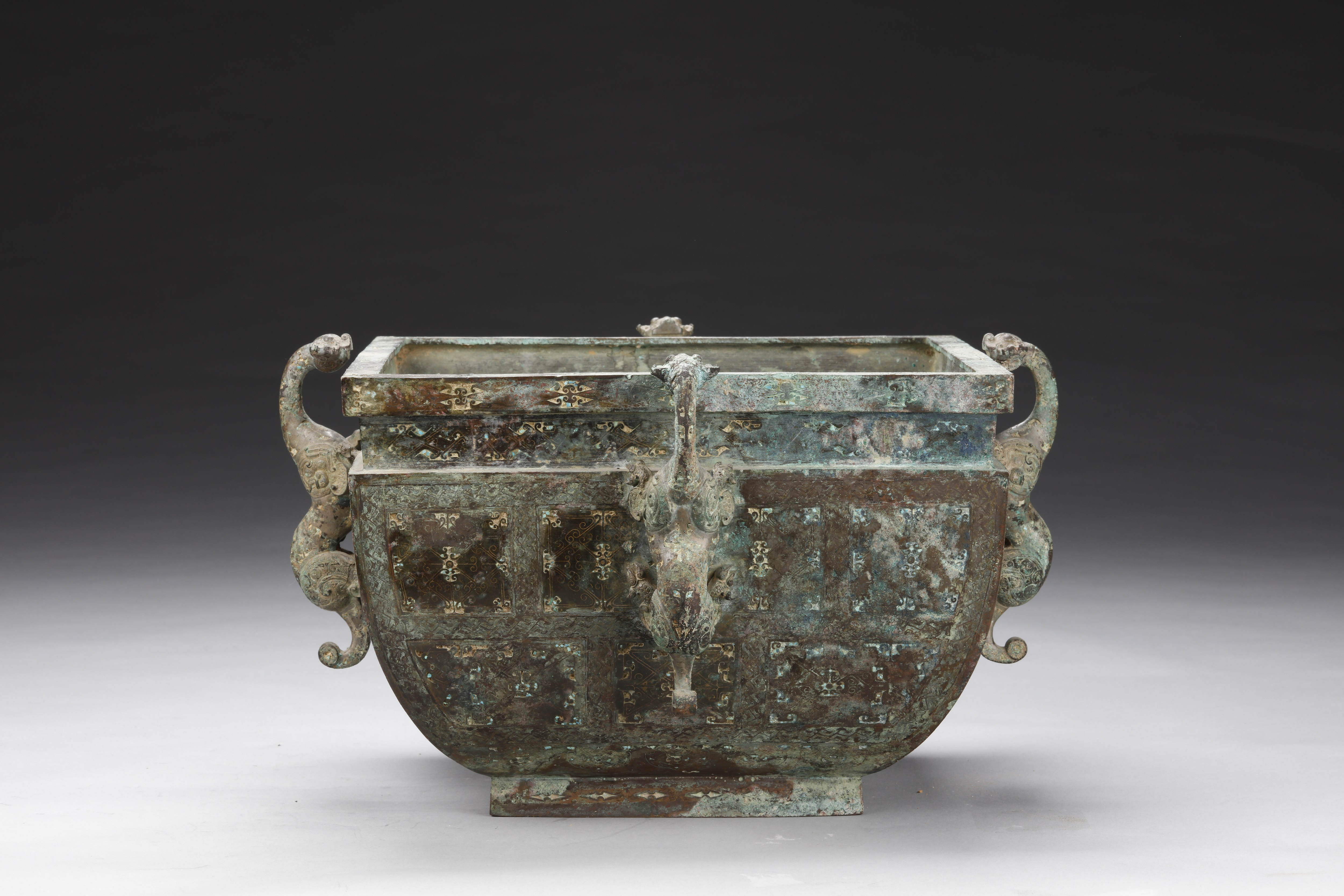

Date: Spring and Autumn Period (770-476 BC)
Provenance: Unearthed from a tomb in Shangcun hill, Sanmenxia, Henan province
Measurements:
Bronze jian: Height: 21.6 cm;
Bronze lei: Height: 32 cm;
Ladle: Length: 43.7 cm
The bronze lei serves as the container of wine and water in ancient China. The shoulder and belly are adorned with square patterns composed of intricate geometric design with silver inlay, as delicate as strands of hair. The overall design is simple and elegant, with meticulous decoration techniques.
The bronze jian basin features square patterns with gold and turquoise inlays along its rim and neck. Four dragon-shaped beasts climbing around are adorned on the four sides. The dragon heads and limbs are decorated with geometric patterns, and turquoise is inlaid on their bodies. The dragons curl and climb, with the dragon heads reaching out over the rim as if inspecting the depth of the water, conveying a lively and dynamic demeanor. The surface of the vessel is smooth, and the intricate gold and silver inlays are finely uniform, demonstrating superb craftsmanship.
This set of paired vessels was likely used for serving chilled or warm wine. They operated by placing ice cubes in the bronze jian basin to cool the wine or adding hot water to warm it. One needs only to open the lid and ladle out the wine. The bronze jian basin and lei container form an ingeniously designed set, combining practicality and artistic value. They not only reflect the superb bronze craftsmanship of the period but also demonstrate the imagination and creativity of Chinese craftsmen.

